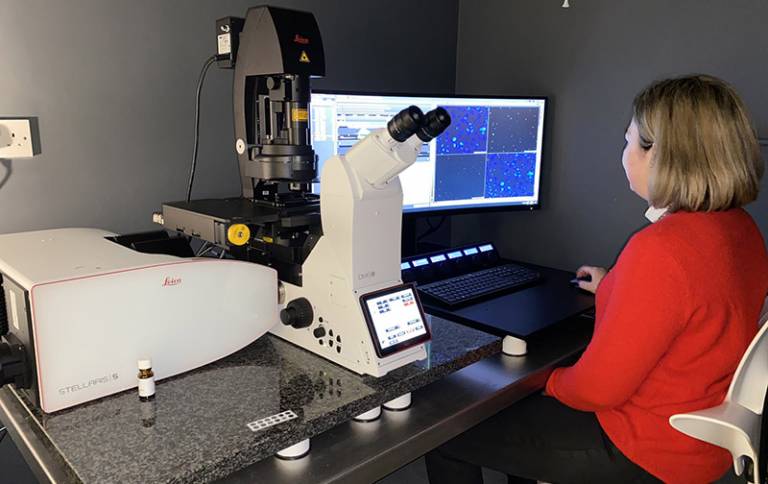Info on light microscope types and techniques
Our light microscopes include widefield and laser scanning confocal systems. They are optimised and ready either for fixed or live specimen imaging. We can provide advice on the design of experiments and in particular the necessary ‘imaging controls’ that may need to be done to prevent the generation of artefacts.
Widefield microscopes
These standard microscopes are used for quick observation and imaging in brightfield (transmitted) or fluorescence modes. The range of magnifications (2x-63x) and fluorescence filter blocks will satisfy most imaging applications. Our unit has the following microscopes:
- Zeiss Axio: with a colour camera for fixed specimens
- Zeiss Observer Z1: with apotome for high resolution fluorescent imaging
- EVOS Fluo 2: fully automated desktop microscope for quick scanning of histology and fluorescent samples
- Nikon Ti-E: fully motorised, live cell dedicated system with a sensitive monochrome camera.
Confocal microscopes
Our five systems offer a wide range of imaging techniques to produce high resolution image datasets of fluorescently labelled samples. The Zeiss upright microscopes are optimised for fixed specimens and the inverted Leica microscopes can take a variety of sample vessels. They are:
- Zeiss LSM 700 - multichannel fluorescence and automated z-stack imaging
- Zeiss LSM 710 - as above with addition of a motorised stage and Airyscan detector
- Leica SP8 HyVolution - live cell imaging, white laser light, resonant scanning, FRAP, FRET, spectral unmixing, integrated Huygens deconvolution
- Leica Stellaris 5 - multichannel fluorescence, full motorisation, fast resonant scanning, Lightning mode for increased resolution
- Leica Stellaris 8 - live cell imaging, white laser light, temporal resolution through Tau Sense and FLIM, FRAP, FRET, fast resonant scanning, Lightning mode

Image
- Stellaris 5
 Close
Close

